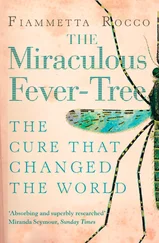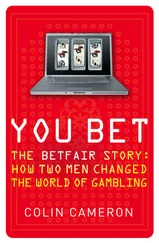How does being kind make us healthier? One theory is that being kind lowers the amount of stress hormones we produce. Evidence for this theory comes from a study in Miami of patients with HIV, which showed that the more altruistic patients had lower levels of stress hormones. In another study, older adults who volunteered to give a massage to babies also had lowered stress hormones. An alternative theory to explain the health benefits of being kind is that such acts of altruism stimulate the production of protective antibodies. In fact, even witnessing someone else being kind might be enough to produce this effect. When researchers at Harvard University showed people a film about Mother Teresa’s work, they discovered an increase in the production of protective antibodies when compared with another group who watched a neutral film. This suggests that we might be able to reap some of the health benefits associated with kindness just by watching others do the good deeds! So the next time you do something nice for someone, you can feel the warm glow of satisfaction knowing that so many people have benefited – not only the recipient of your good deed, but you yourself, too, and those who witnessed it.
What sorts of people are likely to PIF?
What is interesting about some of the PIF campaigns I talk about in this book is not so much the people who pay it forward, but the ones who don’t – the ones who break the chain of hundreds of coffees paid forward. What is it about them that makes them more immune to being kind?
Researchers have shown that people are more likely to perform random acts of kindness if, as children, they witnessed their own parents doing such things. This is an obvious example of vicarious learning , whereby we learn how to behave from the example of others around us.
Other than our upbringing, though, are there other factors that might increase our likelihood of paying it forward? Well, having an audience helps – if other people are around to witness our act we are more likely to be kind. This is because being publicly recognised as a pro-social individual often enhances our self-image and makes us feel good about ourselves. So if we want to encourage acts of kindness in others, we should make sure that there are very public opportunities to carry them out. Interestingly, merely giving people the ‘illusion’ that they are being observed (e.g. by hanging up posters of faces) can generate significant increases in pro-social acts such as charitable giving.
What about mood? How does this affect our likelihood of paying it forward? Some think that we might be kinder to others when we are in a bad mood (especially if that mood is caused by guilt) in order to make ourselves feel better, but this hasn’t always been proven. Certainly, helping others can lift people out of a negative mood and sustain a positive one.
Interestingly, however, people do seem to react to the power of self-serving prophecies. If they are told (even at random) that they are kinder than other people, they will then go on to engage in more random acts of kindness. So if you want your kids to be kind, tell them that they are, and the chances are that they will become so.
Feeling connected to others has also been shown to increase the chances of us acting pro-socially. In one experiment in 2011, researchers got participants to read words associated with social connection (e.g. community, connected, relationship), then asked them how much they intended to volunteer for a charity. The results showed that people were more willing to volunteer for a charity after reading those words than they were after reading a series of other, neutral words (e.g. book, lamp, shoe). A second experiment suggested that these pro-social effects go well beyond volunteering. The researchers asked participants to write about a time when they felt a close bond with someone else, bringing to mind that feeling of connection. Then they asked how willing the participants were to perform five pro-social actions over the coming weeks, including giving money to charity and going out of their way to help a stranger in need.
After writing about their relationship, participants showed a stronger desire to help others than they did after writing about non-relationship issues. This finding was not just hypothetical either; participants were later asked to donate to a good cause and nearly half of the participants who had evoked feelings of connection donated, compared to only 20 per cent of those who had no feelings of connection.
Helper’s High (or Giver’s Glow)
This term was popularised in a 1988 Psychology Today
Конец ознакомительного фрагмента.
Текст предоставлен ООО «ЛитРес».
Прочитайте эту книгу целиком, купив полную легальную версию на ЛитРес.
Безопасно оплатить книгу можно банковской картой Visa, MasterCard, Maestro, со счета мобильного телефона, с платежного терминала, в салоне МТС или Связной, через PayPal, WebMoney, Яндекс.Деньги, QIWI Кошелек, бонусными картами или другим удобным Вам способом.











